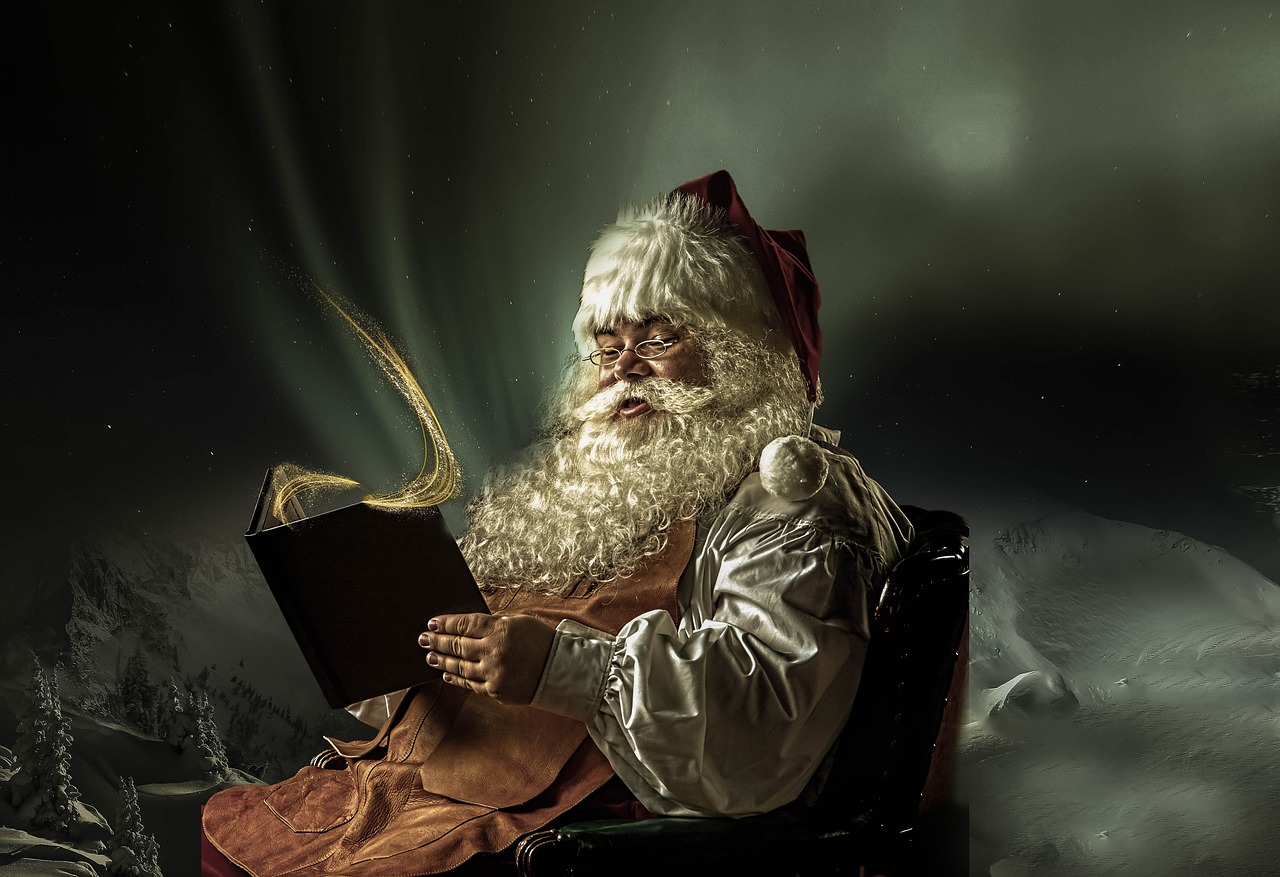
The Christmas Season is here, and with it comes stories and traditions based in ancient folklore from a variety of cultures. Our ancestors had different ways of interpreting the world around them, and for those in the far Northern regions, winter was a time to stay inside, stay warm, tell stories, and share feasts and gifts. And some of the traditions around the Winter Solstice eventually led to our modern celebration of Christmas. Traditions culled from the Roman Saturnalia and the Germanic/Nordic Yule, combined with the Christian celebration of the Nativity (i.e. "Christ's Mass") in the 4th century, eventually outlawed by Oliver Cromwell and the Puritans (1620s-1670s), and then revitalized during the Victorian Age into a festive time when we gather together with family and friends. San Jose Public Library has a variety of books about the history and traditions of Christmas.
Christmas History and Traditions
Winter Solstice/Yule Traditions
Around The World
St. Nicholas or Santa Claus
Perhaps the best loved character that has sprung from Christmas folklore is Santa Claus. Based upon Saint Nicholas, the Bishop of Myra and patron saint of children, who was known for his generous gifts to the poor, and the English Father Christmas along with some aspects of the Norse god Odin, Santa Claus has become synonymous with the joyful spirit of the Season. Our modern version of Santa Claus owes much to the poem "A Visit from St Nicholas" by Clement Clark Moore, and the illustrations done by Thomas Nast in the mid-1800s and by Haddon Sundblom in the 1930s.
Companions of St. Nicholas
In Germany and Austria, St. Nicholas arrives with a bevy of helpers/companions. Some of these companions are full of goodness and light, such as the Christmas Angel or the Christkindl. Other companions are not so loving or forgiving. One of these companions, the Krampus, has had a resurgence in popularity in recent years.
Other companions of St. Nicholas include Frau Perchta (a witch), Knecht Ruprecht (a servant/helper who gives coal to naughty children), and the Belsnickel. The Belsnickel is a wild man who wears animal furs and hides, carries birch switches and a bag full of sweets. He arrives before Christmas and asks the children of the house if they have behaved themselves throughout the year. He then tests them further by asking the children to recite Bible verses, sing a song, solve a riddle, or do a math problem. If they pass this test, they are given sweets. If not, they get switched. The Belsnickel is known to frequent some areas of Germany, parts of Pennsylvania, New York, Indiana, and....the wooded area behind my Grandma's house (at least that's what my Dad told me when I was younger).
Gruss Vom Krampus!
The Christmas Season
In my family, we begin our Christmas festivities on December 4 by decorating our home, while listening to Christmas music and drinking hot cocoa. This ensures that we are safe from Krampus on Krampusnacht (Dec. 5), and are ready to welcome the arrival of St. Nicholas on his feast day of Dec 6. From there we continue our celebrations to include the Winter Solstice (Dec 21), Christmas Eve (Dec 24), Christmas Day (Dec 25), Boxing Day (Dec 26), New Year's Eve (Dec 31), New Year's Day (Jan 1), and Twelfth Night (Jan 5) Epiphany/Three Kings Day (Jan 6). Anything to keep the joyous festivities going and to share with our family and friends.
Twelfth Night (Jan 5) traditions include feasting, wassailing (singing carols), performing plays, and crowning a King of Misrule. This night is the end of the Christmas festivities and was known to be a raucous celebration in the past. In fact, it was banned in some areas of Europe because people were having a bit too much fun. Shakespeare's play Twelfth Night contains some elements of this type of celebration (disguises, cross-dressing, trading of roles between commoners and nobles, mistaken identities, etc.).
Epiphany/Three Kings Day (Jan 6) traditions include gift giving and parades welcoming the Three Kings.
Twelfth Night or Three Kings Day
Best Wishes!
I wish you all the best in this Holiday season and will see you next year!


Add a comment to: Christmas Folklore and Traditions